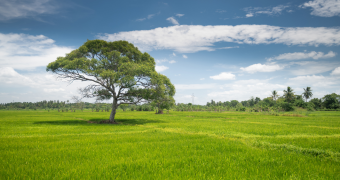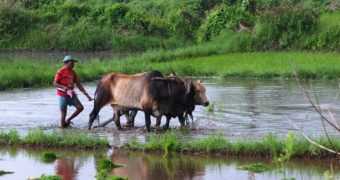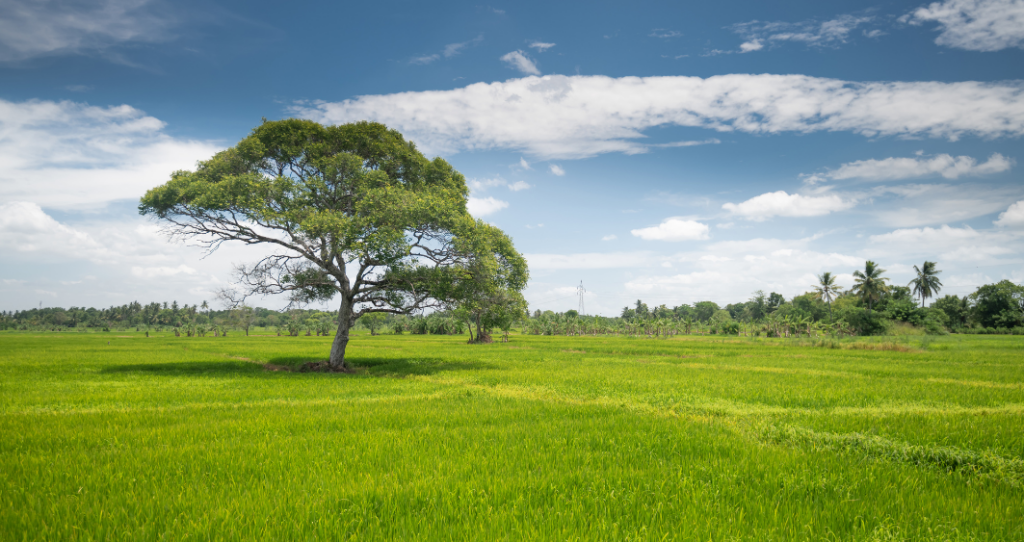1. Historical Background of Paddy Cultivation
Evidence of paddy cultivation in Sri Lanka dates back to around 700–800 BC. Archaeological findings and ancient chronicles such as the Mahavamsa provide clear records of the early beginnings of rice farming in the island. From the earliest times, rice cultivation was not merely a means of producing food—it was a deeply embedded practice in the day-to-day life, culture, and spirituality of the Sri Lankan people. Kings and local leaders gave priority to agricultural development, recognizing its central role in the prosperity of the land.
2. Environmental Requirements and Ingenious Adaptations
Paddy cultivation demands specific environmental conditions: an adequate supply of water, flat terrain, clay-rich soil, and a warm climate. Ancient Sri Lankans displayed remarkable innovation and foresight by meeting these needs through advanced irrigation systems. These systems included reservoirs (wewas), canals, sluices, and underground channels designed to regulate water supply efficiently across varying terrains. The ancient hydraulic civilization was built around this knowledge and became one of the most advanced in South Asia.
3. Mastery of Irrigation: Engineering Marvels
The irrigation systems found in Anuradhapura and Polonnaruwa are some of the finest examples of ancient Sri Lankan engineering. Massive tanks like Kala Wewa, Parakrama Samudra, and Tisa Wewa were constructed using natural contours of the land and served multiple villages. These constructions often featured stone-cut sluices and complex feeder canals that ensured consistent water flow. Even today, many of these irrigation works remain in use or serve as inspiration for modern systems, reflecting the timeless ingenuity of Sri Lankan engineers.
4. Paddy Cultivation and Village Life
For centuries, paddy fields were the lifeline of rural communities. The peasantry, or goviya, developed a lifestyle intimately connected with the rice cycle—from sowing to harvesting. Village rituals, festivals, songs (govi geetha), and even religious offerings were tied to the agricultural calendar. The New Rice Festival (Aluth Sahal Mangallaya), for instance, marks the first consumption of the season’s harvest and is a cultural tradition that continues today.
The community-based nature of cultivation fostered values of cooperation, shared responsibility, and mutual aid through systems like aththam (voluntary collective work).
5. Economic and Cultural Significance
Rice was not only a staple food but also a symbol of wealth and prosperity. It played a major role in the country’s economy, both as a primary product and as a source of social and political stability. Land ownership and access to water rights determined a person’s social status. Many rulers established policies that promoted paddy farming as a national priority, granting lands to farmers and building storage facilities (atupasala) to safeguard excess grain.
6. Evolution of Technical and Organizational Skills
Over generations, Sri Lankan farmers developed both technical skills—such as crop rotation, water management, and seed selection—and organizational systems to manage land and labor. Administrative roles like Vel Vidanes (irrigation officers) and temple-linked farming units reflected the high level of social organization tied to agriculture. Even today, these practices influence rural governance and farming traditions.
7. Paddy Cultivation in Modern Sri Lanka
While modern agriculture has introduced mechanization, chemical fertilizers, and high-yield varieties, traditional paddy farming practices still exist, particularly in areas that value organic methods and heritage seeds. Government and community efforts continue to protect and revive ancient irrigation systems and traditional knowledge to ensure food security and ecological sustainability.










